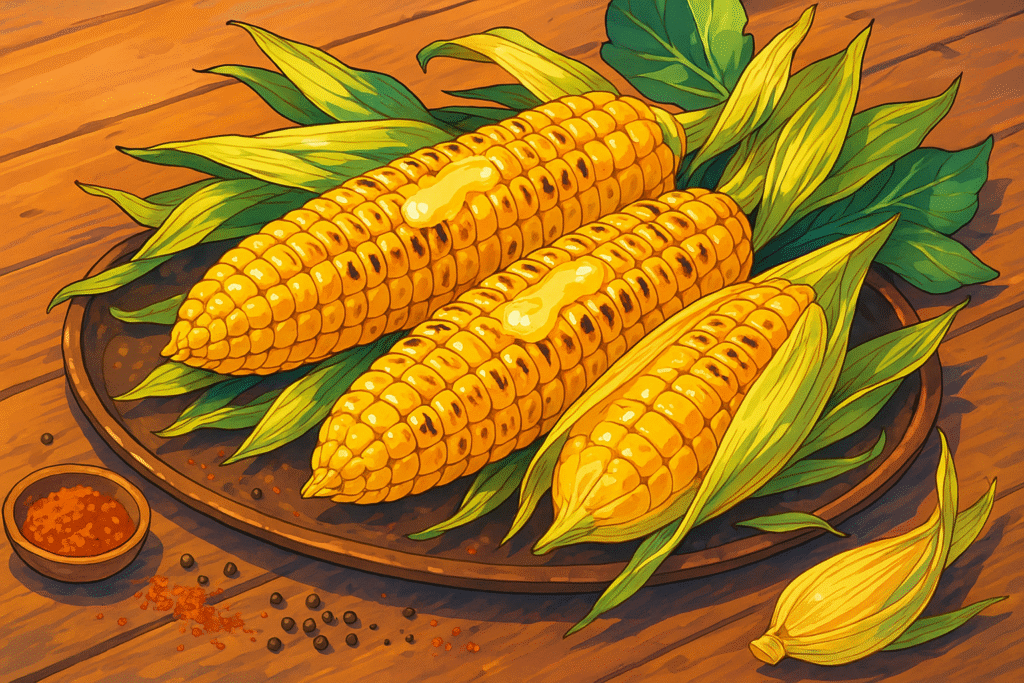Corn (Zea mays)

About Corn
Corn, or maize, is more than a summertime side dish — it’s a cultural cornerstone and one of the most versatile crops in human history. From popcorn to tortillas, sweetcorn to polenta, this golden grain wears many faces across the globe.
Mildly sweet, starchy, and satisfying, corn works across cuisines and cultures — roasted, ground, fermented, or popped.
The History of Corn
Corn was first domesticated over 9,000 years ago in southern Mexico from a wild grass called teosinte. Cultivated by Indigenous peoples of the Americas, it became a central part of Mesoamerican life — spiritually and nutritionally.
It spread through trade routes north to the U.S. and south to Peru, then globally after European contact. Today, it remains a staple from Andean highlands to African savannas — often carrying deep cultural symbolism in Indigenous ceremonies and foodways.
The Science of Corn
Corn is a cereal grain rich in carbohydrates, fiber, and B vitamins. Varieties differ by starch structure — some waxy, some flinty, some sugary — which determines their ideal culinary use.
It contains zeaxanthin and lutein, compounds associated with eye health, and its transformation through nixtamalization unlocks amino acids and improves digestibility in traditional diets.
The Geography of Corn
Corn is grown worldwide — from the U.S. Midwest to Brazil, China, South Africa, and the Philippines. It’s adapted to nearly every climate, with drought-resistant varieties enabling farming in semi-arid regions.
In the Americas, it’s the foundation of tamales, tortillas, arepas, and more. In East Africa, it’s ground into ugali or nsima. In Italy, it’s polenta. It’s a global chameleon.
Varieties of Corn
Sweet Corn
High in natural sugars. Best eaten fresh, grilled, or boiled — a summer classic.
Dent Corn
Used for industrial products, animal feed, and masa. Named for the dent that forms as it dries.
Flint Corn
Hard-shelled and colorful. Common in Latin America for polenta, grits, and decoration.
Popcorn
A specific flint type with moisture-locked kernels that explode when heated.
Blue Corn
A heirloom variety rich in anthocyanins. Used in tortillas and native dishes of the American Southwest.
FAQs All your questions about Corn: answered
Is corn a vegetable or a grain?
Both — it’s a grain botanically, but when fresh and sweet, it’s often treated as a vegetable.
What makes some corn sweet and some starchy?
It depends on sugar-to-starch ratios. Sweetcorn retains sugars at harvest; field corn converts them to starch.
Can you eat corn raw?
Yes — if it’s fresh and sweet. Raw kernels are crisp and juicy, great in salads.
What is nixtamalization?
A traditional process of soaking corn in limewater. It unlocks nutrients and transforms texture — essential for tortillas and tamales.